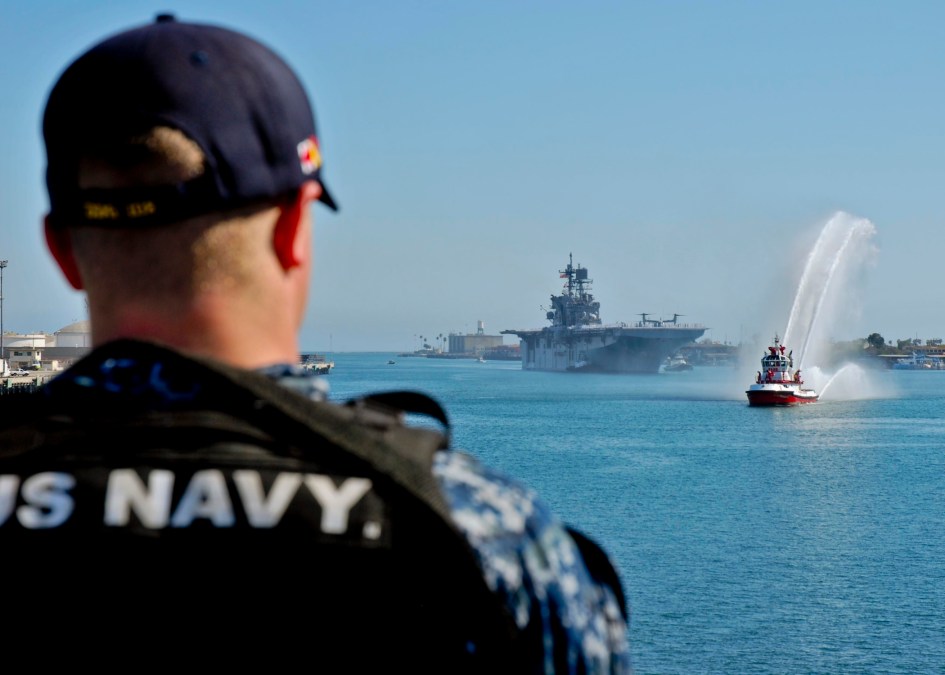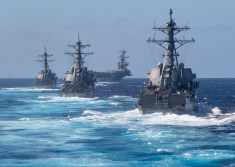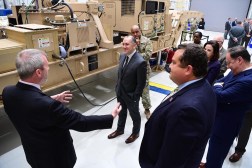Navy reorganizes JADC2 project office, boosting tech authorities

The Navy has centralized some IT and wartime network authorities under the project office in charge of building stronger networks and data management for future maritime warfighting operations.
The newly created office overseeing Project Overmatch — the Navy’s stab at turning the concept of Joint All Domain Command and Control (JADC2) into a reality — was given authority over IT and technology spending in research and development portfolios related to networked warfare in a recent memo.
The authorities will allow the office to move faster in developing new IT and technologies to extend network connectivity across the seas, a Navy spokesperson confirmed.
“Information has become the cornerstone of how we operate, and we need to be able to decide and act faster than anyone else,” Chief of Naval Operations Adm. Mike Gilday recently said after a visit with the Project Overmatch team. “Simply put, Project Overmatch will provide us a decisive advantage over our adversaries and help us deliver a more lethal and better-connected fleet far into the future. This is a top priority — we must deliver it.”
The changes give Rear Adm. Douglas Small, leader of Project Overmatch, new authorities to oversee programs related to research and development, acquisitions and sustainment programs for warfighting networks. Small also is bestowed with the responsibility of unifying data architecture and analytic capabilities to enable JADC2, according to the Navy.
The authorities were transferred from Naval Sea Systems Command, Naval Air Systems Command and Naval Information Warfare Systems Command.
A Navy spokesperson described the memo and ensuing changes as the next step in the “natural progression” of the program’s development. Gilday also signed a memo in October that named Small a direct report manager for Project Overmatch, an early step in the progression of transitioning to the networked warfare JADC2 promises.
The goal of JADC2 is to integrate the domains of land, sea, air, space and cyber by sharing sensor-driven data and using artificial intelligence-enabled machines to process the newly generated information — described as a military Internet of Things. The department has orchestrated several recent tests of network capabilities in 2020.
C4ISRnet first reported on the memo and its changes.






